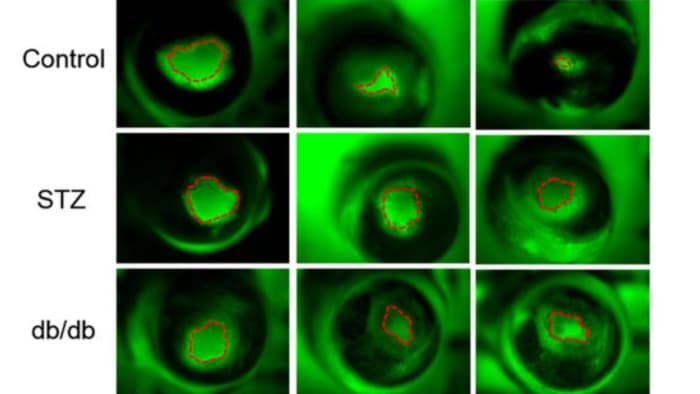
In reaching their conclusion, the UC Davis researchers worked with the eyes of diabetic mice. The mice had been given the disease either through genetic engineering, the use of drugs, or from a high-fat diet in an effort to control for the different types of the disease. In all cases, small pieces of the mice's corneas were removed via a scratch.
Using the highly sensitive equipment at the UC Davis bioelectricity lab, the electrical currents at the edges of the scratches were measured and found to be significantly weaker in the diabetic mice than in healthy mice with identical wounds. This was further correlated to a slower healing time. Such a finding could help scientists develop an electrical stimulating healing process that could help diabetics heal from sores and other wounds faster.
"We think we will be able to speed up healing by increasing the electric currents around wounds," UC Davis' Min Zhao tells Gizmag. Zhao is a professor of ophthalmology and dermatology, who led the team responsible for the research. The group's work appeared in the journal Scientific Reports on June 10.
"We are developing two approaches," he adds. "One, by addition of pharmacological agents to enhance transport of ions that would crank up the endogenous electric signals; and two, by the external application of electric currents using electrical contact lens with multiple electrodes."

 Previous page
Previous page Back to top
Back to top







